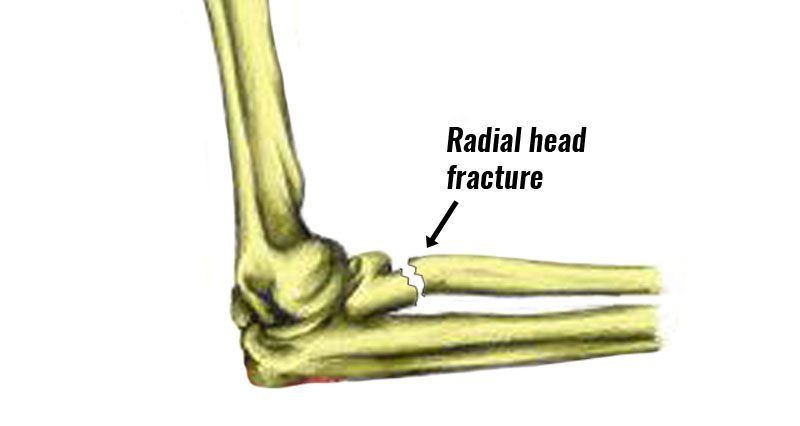A radial head fracture is a break to the radius bone in the forearm just below the elbow joint. It usually occurs as a result of a fall onto an outstretched hand, causing instant pain in the joint. There are different grades of injury, which affects how it is treated.
Symptoms
- Symptoms of a radial head fracture include instant pain at the time of injury. Pain is located on the inside of the elbow joint.
- Your elbow will swell up immediately and you will have difficulty moving your arm.
- Most injuries are not displaced. This means that fragments of bone do not usually move away from the site of the fracture. Therefore, this means they are easier to treat and do not usually require surgery.
- Radial head fractures are not always seen on early X-rays. However, they should be clearly seen after 2-3 weeks of rest, as the bone begins to heal.
- This injury is also associated with elbow dislocations – with 10% of dislocated elbows involving a radial head fracture.
What is a radial head fracture?
It is a fracture or a break at the end of the radius (forearm) bone at the elbow. The elbow joint comprises the humerus or upper arm bone and the radius and ulna bones in the forearm. The ulna bone is on the little finger side, and the radius radiates around it.
Treatment
Treatment of a radial head fracture depends on whether the bones are displaced or not, and by how much they are displaced.
- A grade 1 injury with no displacement is initially immobilized with a removable splint. Then relatively early mobility exercises.
- When displacement is present, surgery may be required. If the fragment is one large piece, this involves fixing it back to the bone with pins or wires.
- When the fragment is broken into several smaller pieces, the surgeon may opt to remove them altogether.









